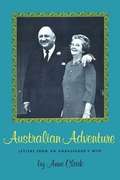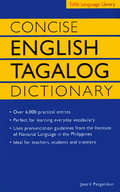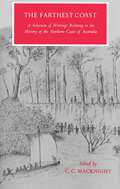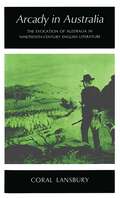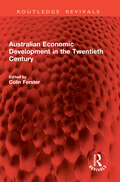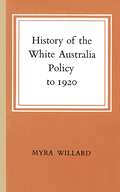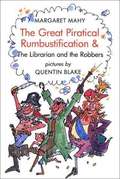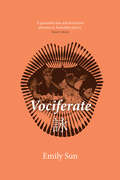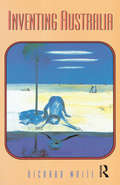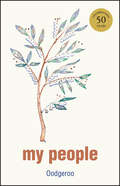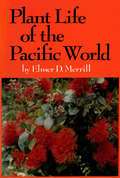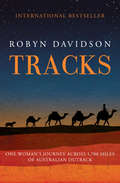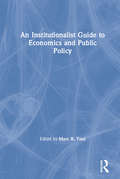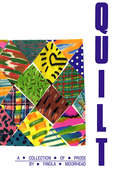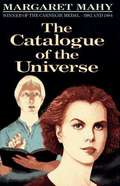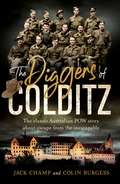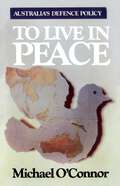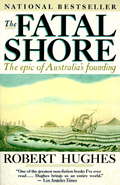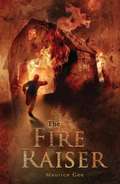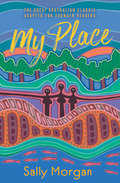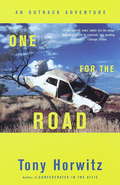- Table View
- List View
Australian Adventure: Letters from an Ambassador's Wife
by Anne ClarkFrom August 1965 to February 1968, during his period of service in Australia, Ambassador Edward Clark traveled in that country as no other American and probably few Australians ever have. His wife, Anne Clark, traveled with him, then wrote her observations and impressions to friends and family in the United States. Her letters, published for the first time in this volume, reveal the isolations and involvements as well as the opportunities and the pleasures of embassy life. The etiquette of official functions at times posed problems, as in the Clarks' first black-tie dinner with the Acting Governor General, where Mrs. Clark was supposed to curtsy. "Some Ambassadors feel strongly that the representative of the President of the United States should never bend his knee (or rather his wife's) to any man. Mrs. Battle, wife of our predecessor . . . put the question directly to President Kennedy. His answer to her was, 'Curtsy you must, but keep a stiff upper knee. '" Soon, Anne Clark realized that the routine of appearances and entertainments was constant: "I do not know when I will make peace with the schedule. I am a slave to the little black book that is my calendar. " In addition to the intricacies of embassy life, the Clarks encountered much that was unfamiliar-new people, almost a new language, new flowers, new animals-even a sky with its new moon upside down. But their warm hospitality and genuine interest in things Australian attracted friends throughout the continent. Figures from the government, the church, the diplomatic circle, and everyday life, plus well-known guests from home, all become known to the reader in this perceptive account of official life from the inside.
Concise English Tagalog Dictionary
by Jose Villa PanganibanThis is a convenient and travel-sized English to Tagalog DictionaryOver ten million Filipinos speak Tagalog, the official language of the Philippines. This dictionary addresses the growing need for a concise, reliable, and inexpensive English-Tagalog dictionary. It is ideal for teachers, students, businesspeople, travelers, and others who are interested in studying Tagalog. The key to understanding Tagalog is a thorough familiarity with the stresses, glottal vowels, and basic vocabulary of the language, all of which are treated in this book. Pronunciation guidelines were determined by the Institute of National Language, which based its preference on standard Manila dialect. Used in conjunction with Tagalog for Beginners or Elementary Tagalog, also published by Tuttle Publishing, this dictionary is an indispensable tool to those learning Tagalog or traveling to the Philippines.Over 6,000 practical entriesPerfect for learning everyday vocabularyUses pronunciation guidelines from the Institute of National Language in the PhilippinesIdeal for teachers, students and travelers
Concise English Tagalog Dictionary
by Jose Villa PanganibanThis is a convenient and travel-sized English to Tagalog DictionaryOver ten million Filipinos speak Tagalog, the official language of the Philippines. This dictionary addresses the growing need for a concise, reliable, and inexpensive English-Tagalog dictionary. It is ideal for teachers, students, businesspeople, travelers, and others who are interested in studying Tagalog. The key to understanding Tagalog is a thorough familiarity with the stresses, glottal vowels, and basic vocabulary of the language, all of which are treated in this book. Pronunciation guidelines were determined by the Institute of National Language, which based its preference on standard Manila dialect. Used in conjunction with Tagalog for Beginners or Elementary Tagalog, also published by Tuttle Publishing, this dictionary is an indispensable tool to those learning Tagalog or traveling to the Philippines.Over 6,000 practical entriesPerfect for learning everyday vocabularyUses pronunciation guidelines from the Institute of National Language in the PhilippinesIdeal for teachers, students and travelers
Farthest Coast: A Selection of Writings Relating to the History of the Northern Coast of Australia
by Campbell MacknightNorthern Australia was once one the most remote areas of the world. To all its early visitors—Macassan fishermen, white explorers, soldiers, government officials, settlers and missionaries—it was their farthest coast. For all it was an alien and difficult place to reach.Campbell Macknight outlines the history of the exploration and settlement of the coast from the Gulf of Carpentaria west to the Kimberleys in his introduction. He suggest it is a geographical unit very different from the rest of Australia.His selections from the writings of early visitors are exciting and interesting for their own sakes, and an invaluable guide to a region of growing economic and strategic importance.
Arcady in Australia: The evocation of Australia in nineteenth-century English Literature
by Coral LansburyThis provocative book examines the vision of Australia in nineteenth-century English literature. The industrial revolution destroyed the myth of an idyllic rural way of life in England, and writers like Charles Dickens, Bulwer Lytton and Charles Reade created it anew in the improbable environment of Australia. The popular image of Australia in English literature was Arcadian; in turn it dominated the thought and traditions of writing in Australia. The man who supplied the material for English writers was Samuel Sidney; he was for a time regarded as an expert on Australia, although he had never set foot in the antipodes and all his material was second-hand. His influence on the literature of the period, and consequently on Australia, has received scant attention. Sidney's influence is fully examined; the book also offers entirely new material on Wakefield, Dickens, Lytton and Reade. It provides a new and challenging interpretation of literature and social history in both England and Australia.
Australian Economic Development in the Twentieth Century (Routledge Revivals)
by Colin ForsterFirst published in 1970, Australian Economic Development in the Twentieth Century analyses aspects of Australian economic development in the twentieth century and places them in historical and international perspective. In Australia, the nineteenth century has been studied much more intensively than the twentieth, and in this latter period the long-run examination of almost any economic topic must break new ground. The main economic histories of the period were written either before the Second World War or come close to general history. Earlier works have naturally dated, and little has been done to integrate the periods before and after the war.The book takes a step towards filling a wide gap in our understanding of Australian development and covers the period from the depression of the 1890s right up to the 1960s. It is the product of a team of Australia’s economic historians working together, but each sovereign on his own special subject. This volume will appeal not only to economic historians but to a wider public interested in Australia’s history.
History of the White Australia Policy to 1920
by Myra WillardThis remarkable work was the first to examine the White Australia policy, and was the first book published by Melbourne University Press, in 1923. It has long been the authoritative reference on the subject, and is essential for every library. Though more than ninety years have passed since publication, the book remains invaluable. It surveys restrictions on immigration by the States before Federation, the system of indentured labour, and gives a picture of a young community protecting itself from immigration which would have altered its whole character.
What About Tomorrow
by Ivan SouthallIn Australia during the Depression, a fourteen-year-old boy runs away from home after a bike accident and sets in motion events that will determine his future.
The Great Piratical Rumbustification And The Librarian And The Robbers
by Margaret MahySummary: In these two stories the protagonists have mischievous fun with a former pirate [who uses a wheelchair] and a band of robbers [who might make good children's librarians]. Other books by Margaret Mahy are available in this library.
Vociferate
by Emily SunThe poems in Emily Sun's debut poetry collection Vociferate were inspired by diasporic-Asian feminist writers. Like these writers, Emily resists both Eurocentric and patriarchal tropes as she explores the complexities of national and transnational identities, reflects upon the concept of belonging, and questions what it means to be Asian-Australian.
Tracks
by Robyn DavidsonA cult classic with an ever-growing audience, Tracks is the brilliantly written and frequently hilarious account of a young woman's odyssey through the deserts of Australia, with no one but her dog and four camels as companions. Davidson emerges as a heroine who combines extraordinary courage with exquisite sensitivity.
Inventing Australia: Images And Identity, 1688-1980 (Australian Experience Ser. #No. 3)
by Richard White'White sets himself a most ambitious task, and he goes remarkably far to achieving his goals. Very few books tell so much about Australia, with elegance and concision, as does his' - Professor Michael Roe'Stimulating and informative. an antidote to the cultural cringe' - Canberra Times'To be Australian': what can that mean? Inventing Australia sets out to find the answers by tracing the images we have used to describe our land and our people - the convict hell, the workingman's paradise, the Bush legend, the 'typical' Australian from the shearer to the Bondi lifesaver, the land of opportunity, the small rich industrial country, the multicultural society.The book argues that these images, rather than describing an especially Australian reality, grow out of assumptions about nature, race, class, democracy, sex and empire, and are 'invented' to serve the interests of particular groups.There have been many books about Australia's national identity; this is the first to place the discussion within an historical context to explain how Australians' views of themselves change and why these views change in the way they do.
My People
by OodgerooImmerse yourself in the poetry of one of Australia’s foremost Indigenous artists My People is a compilation of the poetry of Oodgeroo, of the tribe Noonuccal, Custodian of the land Minjerribah. This collection of captivating poetry detailing the struggle of Australia’s Indigenous peoples is more relevant today than ever before. While she passed away in 1993, Oodgeroo remains one of Australia’s most influential Aboriginal poets. Her poetry leaves little room to argue why that shouldn’t be the case. Razor-sharp and incisive, while simultaneously haunting and beautiful, Oodgeroo’s poems will enchant both young and old alike. My People is a bewitching collection of Oodgeroo’s poems that belongs on the bookshelves of every art lover and anyone with an appreciation of the written word.
Plant Life of the Pacific World
by Elmer D. MerrillThis Asian ecology book offers an overview of the plant life of the vast Pacific region.Among the topics covered are the tropical forest and jungles, the grasslands, the primary and secondary forest, and the plants of the seashores. <P><P>Weeds and cultivated plants are also discussed with overviews of plant distribution and notes on specific islands and island groups.Plant Life of the Pacific World will fill a great need as an important reference source not only for the ethnobotanist but for the professional botanist and the student interested in the flora of the Pacific basin. The information it contains-adequately detailed and clearly presented-should also open the eyes of both visitors and inhabitants to the natural riches of the Pacific region.
Tracks: One Woman's Journey Across 1,700 Miles of Australian Outback (Vintage Departures Ser.)
by Robyn DavidsonThe incredible true story of one woman&’s solo adventure across the Australian outback, accompanied by her faithful dog and four unpredictable camels.I arrived in the Alice at five a.m. with a dog, six dollars and a small suitcase full of inappropriate clothes. . . . There are some moments in life that are like pivots around which your existence turns. For Robyn Davidson, one of these moments comes at age twenty-seven in Alice Springs, a dodgy town at the frontier of the vast Australian desert. Davidson is intent on walking the 1,700 miles of desolate landscape between Alice Springs and the Indian Ocean, a personal pilgrimage with her dog—and four camels. Tracks is the beautifully written, compelling true story of the author&’s journey and the love/hate relationships she develops along the way: with the Red Centre of Australia; with aboriginal culture; with a handsome photographer; and especially with her lovable and cranky camels, Bub, Dookie, Goliath, and Zeleika. Adapted into a critically acclaimed film starring Mia Wasikowska and Adam Driver, Tracks is an unforgettable story that proves that anything is possible. Perfect for fans of Cheryl Strayed&’s Wild.
The Changeover: A Supernatural Romance
by Margaret MahyWhen her little brother seems to become possessed by an evil spirit, fourteen-year-old Laura seeks the help of the strangely compelling older boy at school who she is convinced has supernatural powers.
An Institutionalist Guide to Economics and Public Policy
by Marc R. ToolThis narrative recounts the 18th and 19th century "shipping out" of Pacific islanders aboard European and American vessels, a kind of "counter-exploring", that echoed the ancient voyages of settlement of their island ancestors.
Quilt: A Collection of Prose
by Finola MoorheadAward-winning author, Finola Moorhead stitches together essays, reviews and short stories that make an incisive comment of the process of writing.
The Catalogue of the Universe
by Margaret MahyConfident Angela and intellectual Tycho seem an unlikely pair. They share a passion for deciphering the universe outside their own personal struggles. To Angela and Tycho, it seems the universe can be ordered; their own lives cannot. As their family struggles swirl around them, they are suddenly desperate to discover where they fit in.
The Diggers of Colditz: The classic Australian POW story about escape from the impossible
by Colin Burgess Jack ChampColditz Castle was Nazi Germany’s infamous ‘escape-proof’ wartime prison, where hundreds of the most determined and resourceful Allied prisoners were sent. Despite having more guards than inmates, Australian Lieutenant Jack Champ and other prisoners tirelessly carried out their campaign to escape from the massive floodlit stronghold, by any means necessary. In this riveting account – by turns humorous, heartfelt and tragic – historian Colin Burgess and Lieutenant Jack Champ, from the point of view of the prisoners themselves, tell the story of the twenty Australians who made this castle their ‘home’, and the plans they made that were so crazy that some even achieved the seemingly impossible – escape! ‘A stirring testimony of mateship . . . We are often on tenterhooks, always impressed by their determination, industry and courage’ Australian Book Review
To Live in Peace: Australia's Defence Policy
by Michael O'ConnorIn the eyes of most people defence does not become a problem until the bombs begin to fall. Michael O'Connor argues persuasively that it is high time that governments and concerned individuals did something to counter the 'benign neglect' of defence policy which is the norm in Australia. National security, like any other product of government, must be marketed as well as managed. Australia as a community suffers badly from the refusal of governments and their advisers to take the citizenry into their confidence. Occupying the high ground in public debate, the Defence Department uses weapons of secrecy and assertions of special knowledge as well as more disreputable debating tactics to stifle criticism. In general, this overall political neglect of national security questions in the climate of 'no-threat' assertions has led to the creation of a Defence Force which lacks some of the most elementary logistic support and political control mechanisms. Politically, defence is regarded as a problem that will be dealt with when the need is urgent-when it will be too late and exceedingly costly in lives and money. No one who reads this book can fail to be frightened—not by the threat of nuclear war or holocaust—but by the total inability and inadequacy of our defence forces to meet such a nightmare now. Our national conservatism threatens our security more than it ever did in the days of total war.
The Fatal Shore: The epic of Australia's founding (Harvill Panther Ser.)
by Robert HughesThe history of the birth of Australia which came out of the suffereing and brutality of England's infamous convict transportation system. With 16 pages of illustrations and 3 maps.From the Trade Paperback edition.
The Fire Raiser
by Maurice GeeThe night Dargie's stables burns down, Kitty Wix is knocked tumbling to the ground by strange, loping man fleeing the scene. Who is the fire-raiser who has been terrorizing the small town? Kitty and her friend Irene begin to have their suspicions as to who has been committing the crimes, as do Kitty's brother Noel and his friend Phil. Their curiosity leads them to reluctantly join forces to try and track down the arsonist. The children know they will have to act fast and catch the fire-raiser in the act for anyone to believe them. While Noel and Phil keep watch, the fire-raiser a madman with fires constantly burning in his head, strikes again -- and this time there are lives at stake....
My Place for Younger Readers: My Place For Young Readers - Part 3
by Sally MorganSince its publication in 1987, Sally Morgan's My Place has sold more than half a million copies in Australia, been translated and read all over the world, and been reprinted dozens of times. Sally's rich, zesty and moving work is perhaps the best loved biography of Aboriginal Australia ever written. My Place for Younger Readers is an abridged edition that retains all the charm and power of the original.
One for the Road: An Outback Adventure
by Tony Horwitz"A high-spirited, comic ramble into the savage Outback populated by irreverent, beer-guzzling frontiersmen." --Chicago Tribune"A fascinating insight into what we're all about on the highways and byways along the outback track." --The Telegraph (Sydney)Swept off to live in Sydney by his Australian bride, American writer Tony Horwitz longs to explore the exotic reaches of his adopted land. So one day, armed only with a backpack and fantasies of the open road, he hitchhikes off into the awesome emptiness of Australia's outback. What follows is a hilarious, hair-raising ride into the hot red center of a continent so desolate that civilization dwindles to a gas pump and a pub. While the outback's terrain is inhospitable, its scattered inhabitants are anything but. Horwitz entrusts himself to Aborigines, opal diggers, jackeroos, card sharks, and sunstruck wanderers who measure distance in the number of beers consumed en route. Along the way, Horwitz discovers that the outback is as treacherous as it is colorful. Bug-bitten, sunblasted, dust-choked, and bloodied by a near-fatal accident, Horwitz endures seven thousand miles of the world's most forbidding real estate, and some very bizarre personal encounters, as he winds his way to Queensland, Alice Springs, Perth, Darwin--and a hundred bush pubs in between. Horwitz, the Pulitzer Prize-winning author of two national bestsellers, Confederates in the Attic and Baghdad Without a Map, is the ideal tour guide for anyone who has ever dreamed of a genuine Australian adventure."Lively, fast-paced and amusing . . . a consistently interesting and entertaining account." --Kirkus Reviews"Ironical, perceptive and subtle . . . will have readers getting out their maps and itching to follow Horwitz's tracks. . . . The internal journey is his finest achievement; he allows the reader into his heart, to go travelling with him there, sharing his adventures of the spirit." --Sunday Times (London)From the Trade Paperback edition.
